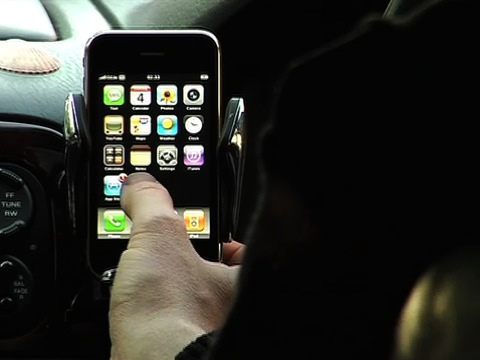


Hope everyone had a nice Christmas Day with their loved ones. We pick up on Monday’s review of the 2012 Vodafone Foundation Smart Accessibility Awards with a look at the winning entry and two runner-ups in the Mobility category.
Obviously, Mobility apps are right in the wheelhouse of smartphone technology developers. When you’re out of the house, whether in your own community or traveling elsewhere, the ability to get fast and accurate information about your locale through a smartphone has revolutionized travel (and travel marketing, for that matter). For with physical disabilities, finding accessible facilities and services is an essential component of living independently.
That’s probably why both the winner of the 50,000 euro first prize and one of the runner-ups both served this very similar function. Stuart Dredge, a member of the judging panel, doesn’t give us much insight into what distinguishes the Jaccede and iNearest apps in his article for The Guardian titled “Apps Blog.” One can speculate that it was the breadth and customizability of the French entry that has earned it the first-place nod. Dredge writes:
[Jaccede] lets people browse its database of 26k places, but also add their own entries and comments to swell that data further. The company is localising the site and app for countries outside France, and working on integrations with larger databases of places.
But even last year’s Mobility grand prize winner, Sozialhelden’s Wheelmap, was a variation on Jaccede. Even though these are serving populations of people with disabilities from different countries, it feels like an inevitability that, sooner or later, these technologies will be co-opted into the normal operating system by the hardware manufacturer and made available across all language platforms. (These apps are being designed for Google Android, after all.)
The other runner-up in the Mobility category, however, offers an intriguingly unique service for people with visual impairments. The developers are a Spanish technology company called Neosistec and the Mobile Vision Research Lab located at the University of Alicante. The app is called Aerial Obstacle Detection, a very straightforward name for the function it serves, described thusly on the Vodafone site:
[AOD] detects obstacles that could not be detected by a walking stick or guide dog, for example low-hanging tree branches. For the application to work, a 3D smartphone (equipped with two front cameras) takes the images from both cameras and extracts the 3D information of the environment in real time. This information is processed to allow the obstacle detection.
Now, that is one cool app! Tomorrow we’ll look at finalists in the Independent Living category.
Image by DigitalJournal.
Hope everyone had a nice Christmas Day with their loved ones. We pick up on Monday’s review of the 2012 Vodafone Foundation Smart Accessibility Awards with a look at the winning entry and two runner-ups in the Mobility category.
Obviously, Mobility apps are right in the wheelhouse of smartphone technology developers. When you’re out of the house, whether in your own community or traveling elsewhere, the ability to get fast and accurate information about your locale through a smartphone has revolutionized travel (and travel marketing, for that matter). For with physical disabilities, finding accessible facilities and services is an essential component of living independently.
That’s probably why both the winner of the 50,000 euro first prize and one of the runner-ups both served this very similar function. Stuart Dredge, a member of the judging panel, doesn’t give us much insight into what distinguishes the Jaccede and iNearest apps in his article for The Guardian titled “Apps Blog.” One can speculate that it was the breadth and customizability of the French entry that has earned it the first-place nod. Dredge writes:
[Jaccede] lets people browse its database of 26k places, but also add their own entries and comments to swell that data further. The company is localising the site and app for countries outside France, and working on integrations with larger databases of places.
But even last year’s Mobility grand prize winner, Sozialhelden’s Wheelmap, was a variation on Jaccede. Even though these are serving populations of people with disabilities from different countries, it feels like an inevitability that, sooner or later, these technologies will be co-opted into the normal operating system by the hardware manufacturer and made available across all language platforms. (These apps are being designed for Google Android, after all.)
The other runner-up in the Mobility category, however, offers an intriguingly unique service for people with visual impairments. The developers are a Spanish technology company called Neosistec and the Mobile Vision Research Lab located at the University of Alicante. The app is called Aerial Obstacle Detection, a very straightforward name for the function it serves, described thusly on the Vodafone site:
[AOD] detects obstacles that could not be detected by a walking stick or guide dog, for example low-hanging tree branches. For the application to work, a 3D smartphone (equipped with two front cameras) takes the images from both cameras and extracts the 3D information of the environment in real time. This information is processed to allow the obstacle detection.